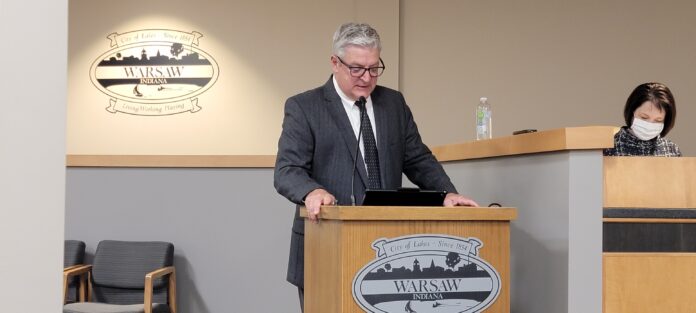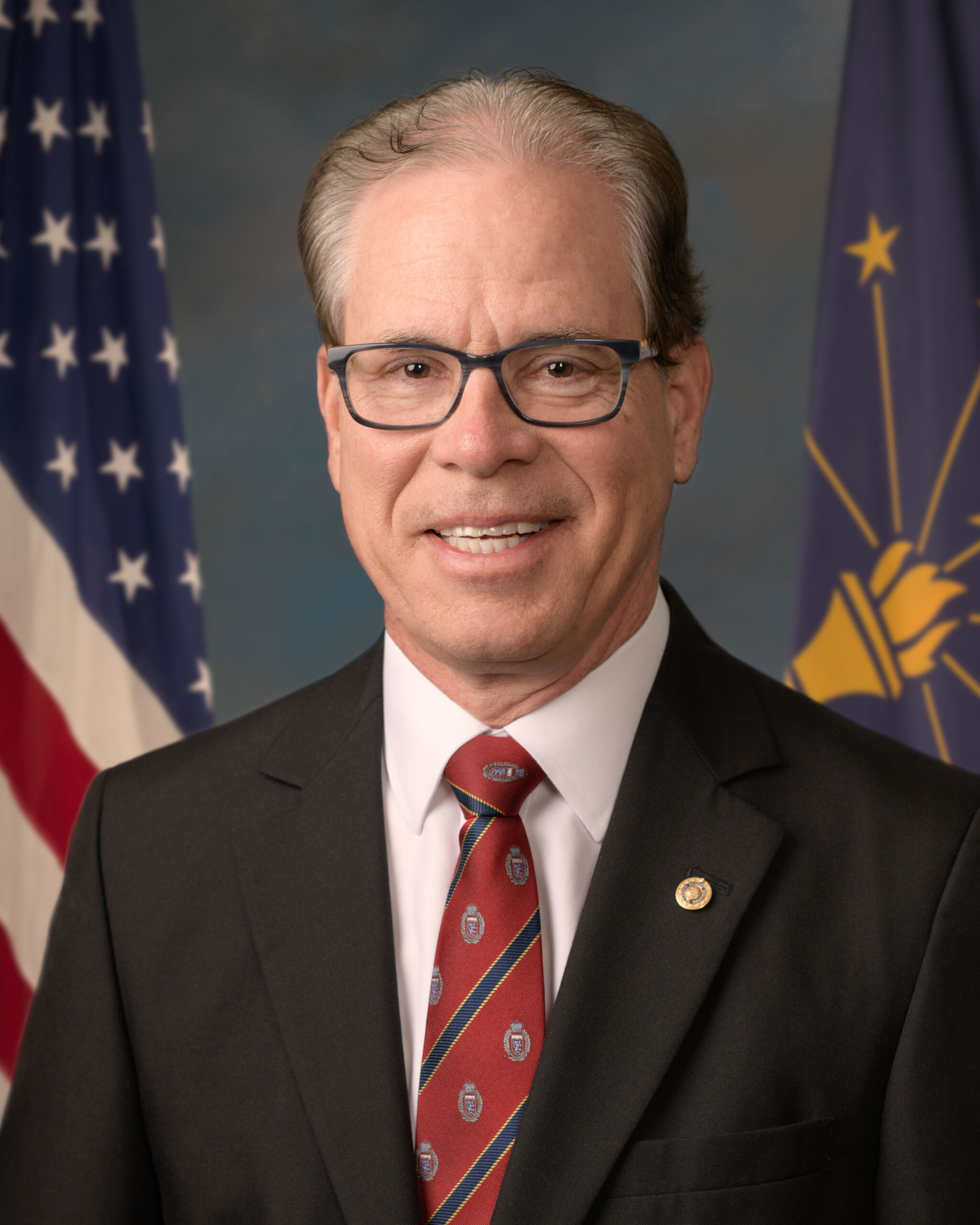
In his 10th State of the City address on Monday night, Warsaw Mayor Joe Thallemer talked about what 2020 brought about with the coronavirus pandemic on-going by looking at some achievements, while touching base on some of the struggles as well.
Thallemer said that getting ready for the address this year was much different than in the past. “This year, the usual questions “Where have we been?” and “Where are we going?”
require a little closer look.”
He started out by acknowledging elected city officials, city department heads and the entire city staff. “Today, stronger than ever, we continue to move our city forward with this team. With their ability to adapt to all of the changes that the pandemic necessitated I couldn’t be prouder of them as we progress towards better times.”
Thallemer briefly talked about COVID statistics on a local and state level, pausing for a moment of silence to remember those who have been affected. He also thanked those on the front lines, including doctors, nurses, health care workers and first responders.
He then talked about the sacrifices and hardships on the local economy, “The stay at home orders and social restrictions created an enormous amount of pressure on them to operate responsibly to protect their customers and employees. I know the battle isn’t over for them. Federal, state, and local stimulus programs have and will continue to help but we must all be mindful of the significant negative impacts on our businesses.” Thallemer continued to urge consumers to support local businesses as some are still recovering from the past year.
Thallemer then went more into the decision-making sides of the COVID pandemic and how things changed rapidly and constantly, moving priorities to health and safety for the community. “From day one, our team relied on the importance of Public Health Data and
information to guide our local decision making… real time, emerging public health data was and still is the critical element to guide our response.”
The Mayor said the information from both the Kosciusko County Health Department and the Indiana Department of Health was “invaluable,” saying that officials kept to the task and the community was able to benefit from that. “Real time, emerging public health data was and still is the critical element to guide our response.”
The importance of testing and vaccines were also discussed. ” Having made it through a second, more significant wave of case counts, we stand at the threshold of the final solution: vaccination. The state of Indiana has very purposefully prioritized its most susceptible residents for the early six stages of the vaccination rollout. Vaccinations are safe and they work.”
Next, the speech touched base on how the pandemic affected business in the city. “While it was anything but business as usual, there was still plenty of business. Administrative demands were significantly impacted, and for the most part, required more attention, not less. Some local projects slowed down, but some didn’t. At each department, delivery of services, whether essential or not, had to adjust.”
An anticipated growth in city population was talked about, after the latest population estimate from July 2019 for Warsaw was 15,150, or a 10.6 percent increase from 2010. Thallemer used this date to segue into a discussion about the local housing market and a study that was funded by the city, Kosciusko County and the Kosciusko County Community Foundation.
“The data was released last summer and reinforced the widely held belief that our county has significant unmet housing needs. Desirable housing to meet the needs of workforce and seniors is a high priority focus of a local initiative to meet this challenge. Zimmer Biomet in conjunction with the Indiana Housing and Community Development Authority, and The Kosciusko County Community Foundation with the support of a Lilly Grant have established a loan reserve fund to stimulate public/private housing projects that focus on affordable and market rate workforce housing,” Thallemer said. He mentioned the new senior housing project on East Center Street and the recent project of Gateway Grove as several examples of the city’s housing strategy.
The Mayor also talked about the growing industry in the area, especially with the medical and orthopedic companies. “Warsaw is fortunate to have a broad palette of orthopedic industry resources in our community. Those resources become a significant asset when similar industry prospects look to relocate here. A Warsaw address improves their chances of success.” He mentioned examples of Nextremity Solutions intent to expand into manufacturing after an acquisition of Lakeland Technologies, along with the most recent announcement of Razor Medical Industries moving to Warsaw from Portsmouth, N.H.
Next was the US 30 studies and the coalition behind it. An announcement several weeks ago by the Indiana Department of Transportation said they will begin a study on the stretch of road from the Ohio/Indiana State Line to Valparaiso and to convert it into a freeway, much like what US 31 is becoming between South Bend and Indianapolis. Thallemer says the step by INDOT demonstrates their commitment to address overdue improvements to the stretch of highway.
“From 2011 thru 2018, Average Daily Traffic Volumes have increased over 48%. Annual accident rates have increased 39% over the last decade. In 2019, there was a crash every 2½ days on US 30 within the city limits.”
Thallemer said more public input sessions are in the works for 2021, whether they be in person or virtual, after planned meetings in 2020 had to be put on hold. The last meeting was held late in 2019 at Lincoln Elementary School.
The Mayor then went on and talked about recent growth in the city and how tax rates have stayed low. “For the past five years, population and investment growth has demonstrated tangible, significant return on our 15 investments! For example, this past year, the city’s tax base grew four percent (or $44 million) since 2016, our city tax base has grown over 34 percent, a total increase of $282 million!”
He also mentioned that the city portion to the tax rate went down to levels that have not been seen since 2013, where the new rate saved taxpayers $100 for every $100,000 of home value.
Entering into 2021, the city budget was balanced. “We kept our low city tax rate steady. We met our self-imposed cash reserve requirements, and maintained low debt limits. Growth has benefited us all but our revenue concerns need to be addressed.” Thallemer said the utilization of an annual comprehensive financial plan has improved the city’s ability to more accurately forecast what things will look like over the next few years and what to plan for. “Our department heads prepare their budgets knowing they will have to continue to make the necessary cuts that diminishes their ability to meet the demands of our city.”
Toward the end of his address, the Mayor said, “Our community stood and continues to stand tall in the face of an evolving public health crisis of unprecedented magnitude.”
You can watch the entirety of the State of the City address below:




